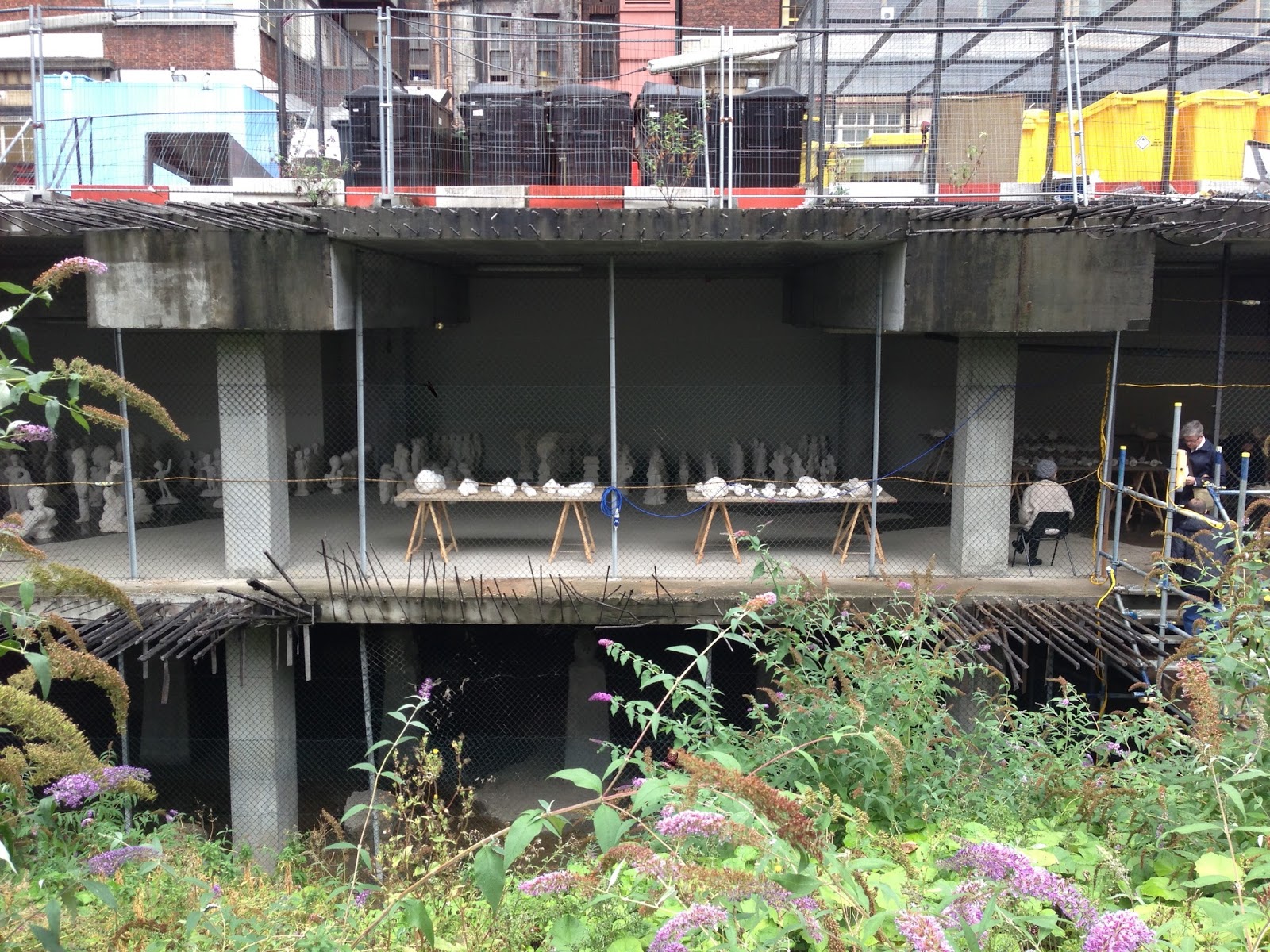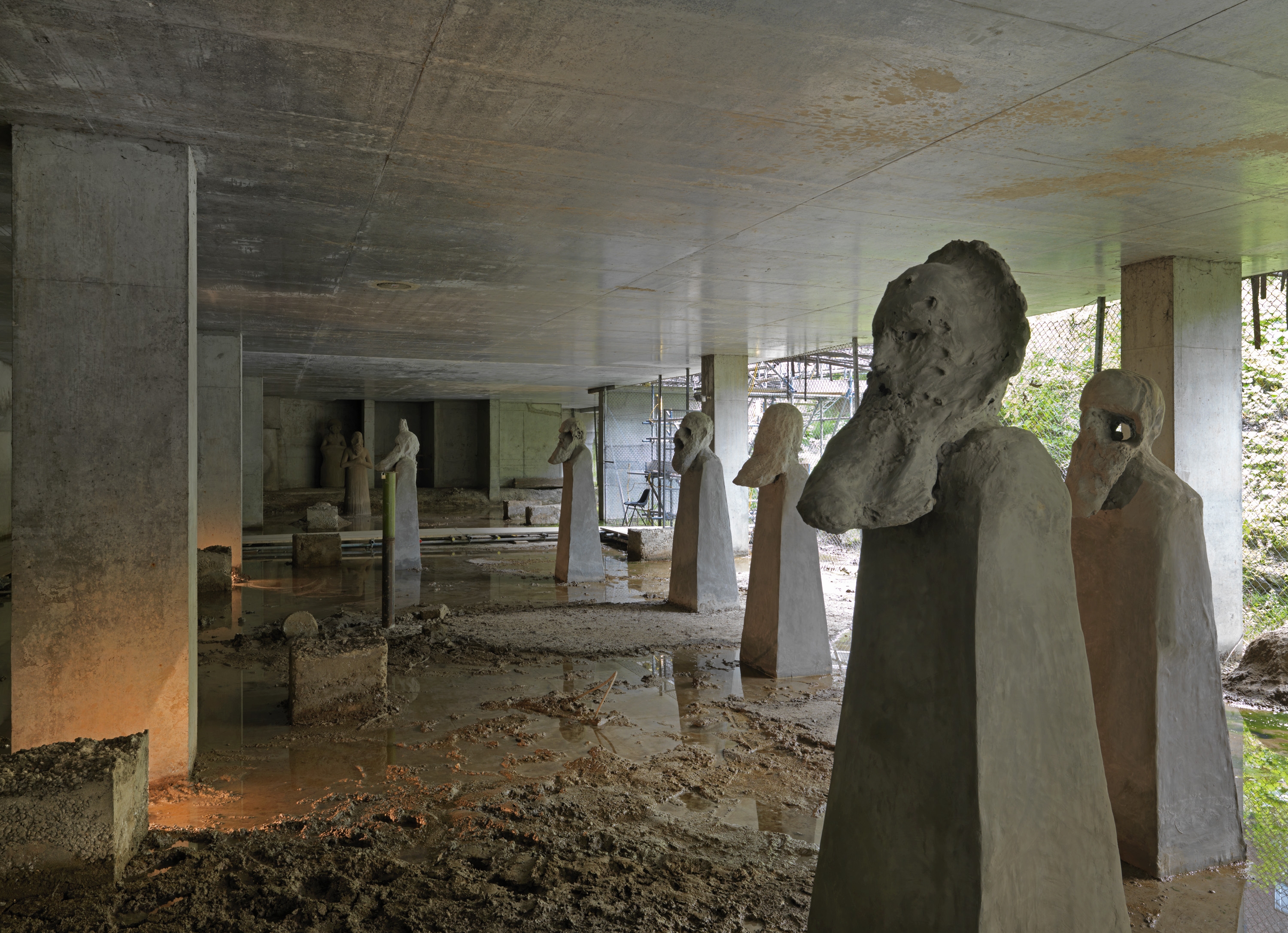MORE THAN THE SUM OF ITS PARTS

 Images: www.royalacademy.org.uk
Images: www.royalacademy.org.ukThinking on to the future development of this project, it feels as though any deviation from the norm will be challenging for the local artisans, even if carefully supported. They were so precise in their corrections of my work to replicate the traditional form of Annapurna. Naba, as the boss, may have a wider view of things but ultimately tasks will get filtered down to his team. He won’t be around and they will get done the way they think they should be done, the way they have always been done. Timing will be key to ensure they have time to commit to the work on the project and of course, commercial orders and regular clients for the pujas will always be prioritised.
Nandita and I communicate regularly and bounce around ideas. Later she explains the dichotomy between the specificity they apply to the proportions of, and approach, to the traditional forms and their ability to produce completely unprecedented Durga images each year for contemporary artists.
One thought is that we ask each Kumartuli workshop to produce a hand – something they are familiar with creating – holding a gift. The gift is left open to interpretation, a small but important hole in the brief. Will this still be too much creative freedom I wonder? These objects get shipped to the UK and they, along with their packaging, are transformed into a single installation. The unique multiple: Each object in itself simple and easy to grasp, practically speaking. As a collection, if well exhibited, it could have a particular resonance. I’m thinking of the fantastic installation at the RA, ‘The Ancestors’, 2019, as a reference, curated by Alison Wilding and Cathie Pilkington. This is an installation of busts from the Royal Academy Collection, exploring the strangeness of portrait sculpture, which contrasts low-grade construction materials with precious bronze and marble to draw attention to the oddness of the viewing conventions that surround these artworks.
An approach like this could work as we wouldn’t be asking the workshops to produce the ‘art work’, just components of it and an object they are very familiar with making. Nor do they need to grapple with any contemporary art concepts they aren’t familiar with. It would also create a small income in the off-season. A key consideration for Nandita and I is the diversification of their craft to new markets because work on the pujas is highly seasonal. An approach like this would engage all the interested workshops democratically. It didn’t go unnoticed within the community that I was working with Naba’s workshop, heightened when the impact of Coronavirus began to creep into consciousness, and not in a good way.
What would be important in an approach like this is the aftercare. Time built in to communicate, contextualise and represent the exhibition in the UK back to the Kumartuli. The exhibition could be used as an education tool, a case study to demonstrate new applications of existing processes, new ideas and approaches. Could the installation be re-exhibited back in Kolkata? Would the artisans come if invited to a gallery? Many of them work 21 days straight before getting time off to go home to see their families. Would this just feel like more work on top of work? Would an informal presentation back in the community over food have more uptake? I noticed on one of my walks there is a community centre in the district.
Nandita and I communicate regularly and bounce around ideas. Later she explains the dichotomy between the specificity they apply to the proportions of, and approach, to the traditional forms and their ability to produce completely unprecedented Durga images each year for contemporary artists.
One thought is that we ask each Kumartuli workshop to produce a hand – something they are familiar with creating – holding a gift. The gift is left open to interpretation, a small but important hole in the brief. Will this still be too much creative freedom I wonder? These objects get shipped to the UK and they, along with their packaging, are transformed into a single installation. The unique multiple: Each object in itself simple and easy to grasp, practically speaking. As a collection, if well exhibited, it could have a particular resonance. I’m thinking of the fantastic installation at the RA, ‘The Ancestors’, 2019, as a reference, curated by Alison Wilding and Cathie Pilkington. This is an installation of busts from the Royal Academy Collection, exploring the strangeness of portrait sculpture, which contrasts low-grade construction materials with precious bronze and marble to draw attention to the oddness of the viewing conventions that surround these artworks.
An approach like this could work as we wouldn’t be asking the workshops to produce the ‘art work’, just components of it and an object they are very familiar with making. Nor do they need to grapple with any contemporary art concepts they aren’t familiar with. It would also create a small income in the off-season. A key consideration for Nandita and I is the diversification of their craft to new markets because work on the pujas is highly seasonal. An approach like this would engage all the interested workshops democratically. It didn’t go unnoticed within the community that I was working with Naba’s workshop, heightened when the impact of Coronavirus began to creep into consciousness, and not in a good way.
What would be important in an approach like this is the aftercare. Time built in to communicate, contextualise and represent the exhibition in the UK back to the Kumartuli. The exhibition could be used as an education tool, a case study to demonstrate new applications of existing processes, new ideas and approaches. Could the installation be re-exhibited back in Kolkata? Would the artisans come if invited to a gallery? Many of them work 21 days straight before getting time off to go home to see their families. Would this just feel like more work on top of work? Would an informal presentation back in the community over food have more uptake? I noticed on one of my walks there is a community centre in the district.
I’m also thinking of Daniel Silver’s 2013 Artangel commission, ‘Dig’, as another reference point. Presented in the guise of a quasi-archaeological project, Dig was an excavation of the role of figures of worship, idols and fetishes in different cultures, ancient and modern. A large number of figurative forms were lying around, eroded, fragmented, remodelled.
Whilst this work plays with the idea of artefact, there is a sense of time, life cycle and process that resonate strongly with the idea of ‘making the making visible’, a strand of enquiry that often runs through projects we deliver at Pangaea Sculptors’ Centre (PSC) and something informing the development of this collaboration. In 2019, PSC ran a residency in Castellón, Spain, PARC, which aimed to make public the production processes of site specific art works and exhibition. Three artists and one curator took up residence in the Ethnographic Museum of Vall d’Alba and the public were invited to experience the varying stages of the artworks’ and exhibition’s life cycle. Once the exhibition was complete, rather than opening, it closed.
There is a performativity and an energy in the material and physical processes of the work at Kumartuli. There is a sense of time, of a movement through stages; a cycle. And there is the poetic and sustainable concept of the unfired clay and straw being washed back in to the earth. Like Silver’s, our installation could allude to the evolution of sculptural forms across time and place, losing and acquiring new meanings as the forms build and multiply and then merge and dissolve.
Sunday 15th March 2020
Whilst this work plays with the idea of artefact, there is a sense of time, life cycle and process that resonate strongly with the idea of ‘making the making visible’, a strand of enquiry that often runs through projects we deliver at Pangaea Sculptors’ Centre (PSC) and something informing the development of this collaboration. In 2019, PSC ran a residency in Castellón, Spain, PARC, which aimed to make public the production processes of site specific art works and exhibition. Three artists and one curator took up residence in the Ethnographic Museum of Vall d’Alba and the public were invited to experience the varying stages of the artworks’ and exhibition’s life cycle. Once the exhibition was complete, rather than opening, it closed.
There is a performativity and an energy in the material and physical processes of the work at Kumartuli. There is a sense of time, of a movement through stages; a cycle. And there is the poetic and sustainable concept of the unfired clay and straw being washed back in to the earth. Like Silver’s, our installation could allude to the evolution of sculptural forms across time and place, losing and acquiring new meanings as the forms build and multiply and then merge and dissolve.
Sunday 15th March 2020
 Image: http://ruicepeda.blogspot.com
Image: http://ruicepeda.blogspot.com
 Image: brigitteistim.wordpress.com
Image: brigitteistim.wordpress.comBritish Council and City of Culture 2021, Coventry - International Changemakers, 2020